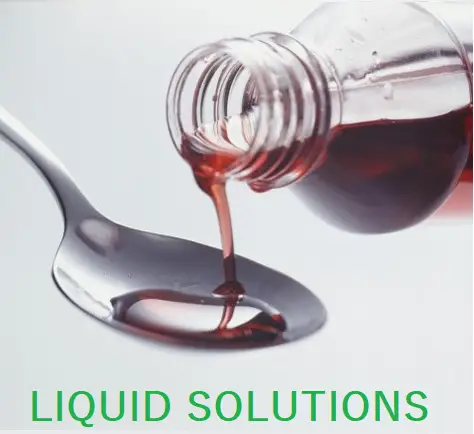Iodine, Potassium Iodide Solution
Iodine, Potassium Iodide Solution
PURPOSE: This Master formula record (MFR) is written to describe the formulae, manufacturing procedure, specifications, packing details of dosage form.
SCOP: This MFR is performed and is applied during the manufacturing of dosage form.
RESPONSIBILITY / ACCOUNTABILITY: It is the responsibility of Manufacturing Chemist to follow and adhere to this SOP. The Production Pharmacist, QA Manager, QC Manager are accountable for the strict adherence to the master formula.
COPY ISSUED TO:
Master Copy: Manager Quality Assurance
Copy No. 1: Production Pharmacist
Copy No. 2: Manager Quality Control
Copy No. 3: External Preparation Section
| PRODUCT NAME: Iodine, Potassium Iodide Solution | BATCH SIZE: 200 KGS |
| PRODUCT REFERENCE CODE: | UNIT SIZE: 20g / 18 ml |
| GENERIC NAME: N.A. | PACK SIZE: 160 x 20 gm / 18 ml |
| DOSAGE FORM: solution | STRENGTH: N.A. |
| DEPARTMENT: LIQUID DEPARTMENT | EXPIRY DATE: AFTER 24 MONTHS FROM THE DATE OF MANUFACTURING |
COMPOSITION:
Iodine I.P. 1 g
Potassium Iodide I.P. 2 g
Tannic Acid I.P. 1.5 g
Menthol I.P. 0.25% w/v
Camphor I.P. 0.20% w/v
Thymol I.P. 0.25% w/v
Glycerin I.P. 70% w/v
Purified Water 100 g
EQUIPMENTS TO BE USED:
| SR. NO. | NAME OF EQUIPMENT | ASSEMBLING AS PER SOP NO. | CLEANING AS PER SOP NO. |
| 1 | Charging Tank E-02 (1200 Lts) | ||
| 2 | Storage Tank | ||
| 3 | Manual Bottle Filling Machine | ||
| 4 | Semi Automatic Bottle Sealing Machine | ||
| 5 | Semi Automatic Bottle Labelling Machine
| ||
| 6. | Shrink Packing machine |
RAW MATERIALS:
| S.NO. | INGREDIENTS | STD | Theoretical Quantity Req. | Overages % | Total Quantity Used |
| 1 | camphor | I.P. | 0.400 | 25 | 0.500 Kgs |
| 2 | GLYCERINE | I.P. | 140.000 | 140.000 Kgs | |
| 3 | IODINE | I.P. | 2.000 | 10 | 2.200 Kgs |
| 4 | MENTHOL | I.P. | 0.500 | 20 | 0.600 Kgs |
| 5 | POTASSIUM IODIDE | I.P. | 4.000 | 10 | 4.400 Kgs |
| 6 | SPIRIT CHLOROFORM | I.P. | 45.000 | 45.000 Lts | |
| 7 | TANNIC ACID | I.P. | 3.000 | 10 | 3.300 Kgs |
| 8 | THYMOL | I.P. | 0.500 | 20 | 0.600 Kgs |
PACKING MATERIALS:
| S.NO. | NAME OF THE MATERIAL | THEORETICAL QUANTITY REQ. | FOR RECORD | TOTAL QUANTITY USED |
| 1. | 20 ML AMBER ROUND BTLS | 10000.000 | 10000.000 Nos. | |
| 2. | ADH. TAPE ROLL BROWN | 2.000 | 2.000 Nos. | |
| 3. | GUM ACCACIA | 1.000 | 1.000 Nos. | |
| 4. | C. BOX K-25 | 62.500 | 62.500 Nos. | |
| 5. | PL. INNER PLUG (DRY SYRUP) | 10000.000 | 10000.000 Nos. | |
| 6. | P.P. CAPS 25 MM (RUBBER) | 10000.000 | 10000.000 Nos. | |
| 7. | SHRINK FILM 220 X 220 MM | 500.000 | 500.000 Nos. | |
| 8. | UNIT CARTONS SENSOSEAL 18 ML | 10000.000 | 2.000 | 10002.000 Nos. |
| 9. | LABELS SENSOSEAL 18 ML | 10062.500 | 3.000 | 10065.500 Nos. |
MANUFACTURING SPECIFICATION:
Average fill of each Bottle is 18 ml.
Volume variation limit allowed in each filled Bottle is 18 ml to 20 ml.
Make up the final volume of the solution accurately.
Transfer the solution from charging tank to storage tank after complete charging of batch.
Yield:
Theoretical Yield is 10000 Bottles.
Expected Practical Yield is 10000 + 2% Bottles.
Packing Details:
Wash the bottles manually.
Transfer the lotion from charging tank to manual bottle filling machine for filling of the bottle as per its SOP.
Fill 100 ml of solution in 100ml Amber coloured glass bottles.
Sealing of filled bottle is done on semi-automatic bottle sealing machine as per its SOP.
Label each filled and sealed bottle by Labelling machine as per its SOP.
Make a group of 20 bottles packed in unit cartons.
Wrap this film in thermoplast film and shrink pack it by operating shrink packing machine as per its SOP.
Pack such 8 shrinked packets in the Corrugated box. Thus each corrugated box contains 8 X 20 X 20 gm/ 18 ml filled and sealed bottles.
Seal each corrugated box with adhesive tape on both side and label it properly by affixing the specified label.
MANUFACTURING PROCESS:
To 140 kg of Glycerin in Charging Tank Start stirring.
Dissolve 4.40 kg of Potassium Iodide in 25 Ltrs of purified water and add 2.2 kg of Iodine to it. And let it. Mix well. Add this to the above tank.
Dissolve 3.30 kg of Tannic Acid in 25 ltrs of purified water and to the bulk batch.
Dissolve 0.500 kg of Camphor, 0.600 kg of Thymol, 0.600 kg of Menthol in45 ltrs of Spirit Chloroform.
And stir well for 30 minutes.
Send the sample to Quality Control Department for bulk testing.
Transfer this to the Storage tank for filling.
IN-PROCESS CONTROLS:
The following in-process controls should be maintained during the processing:
Check Raw materials used for manufacturing purpose are all approved materials and have ‘Released’ labels fixed on it.
All weighed Raw materials should be counter-checked by Manufacturing Chemist. If any discrepancy is noticed, it should be immediately brought to the notice of Production Pharmacist and QC/QA Manager.
Physical characteristics of Raw material like colour, odour, and consistency are checked before compounding.
Final volume should be made as per MFR using correct dipstick in the Manufacturing Chemist.
pH of the bulk should be checked and it should be with in specified limits.
Only after receiving the Bulk Test Report from Q.C. Dept. start the filling and sealing stage.
The Manufacturing Chemist should check intermittently filled volume at 30 minutes interval and record for the same should be kept in Batch Manufacturing Record.
The net volume should be checked for all the filling nozzles and in no case, net volume should be less than volume claimed on the label.
Limit for Volume Variation: Volume claimed on the label + 2ml
Visual inspection of filled and sealed bottles should be done as per SOP and the record of the same should be kept in the Batch Manufacturing Record.
The labels and cartons should be checked thoroughly for proper batch coding.
Intimation should be sent to Quality Control Department for finished product sampling and testing.
After the completion of labelling and packaging, the coded labels and cartons should be accounted for and rejected printed material should be destroyed in the presence of QC/QA Manager. Maintain the destruction of the same in the Batch Manufacturing Record.
It will be ensure that filling or packaging equipment has been properly cleaned.
Filling or packaging of next product should not commence until the IPQA has given the ‘Line Clearance’.

